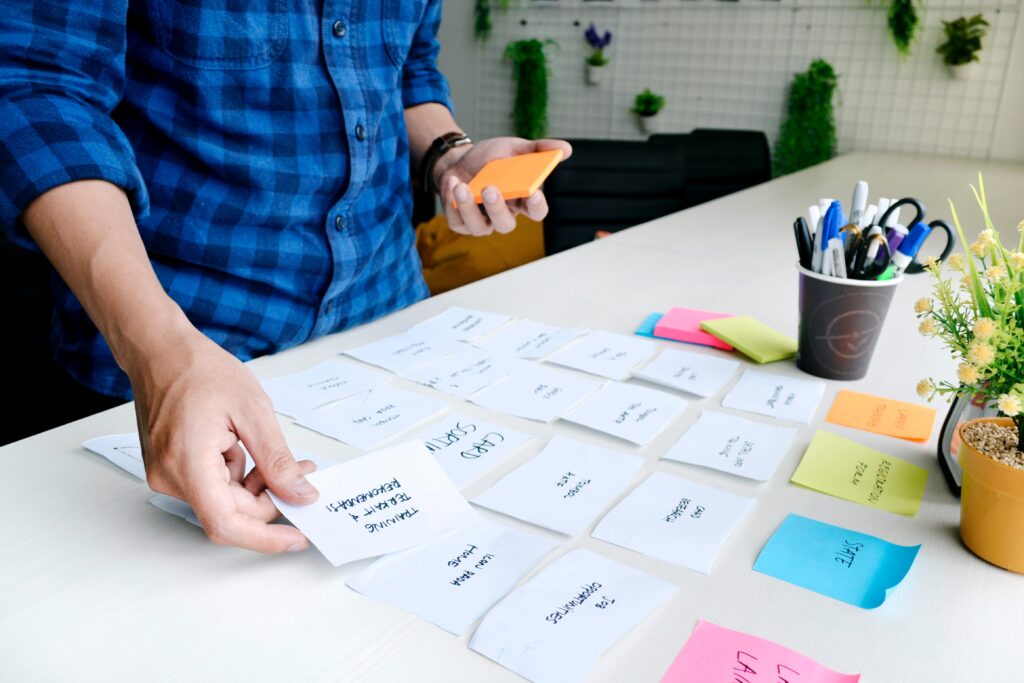Group Sorts and Grids
What is it?

Group sorts and grids are categorization exercises. “[C]ategorization is regarded as a process of determining what things ‘belong together’, and a category is a group or class of stimuli or events that so cohere” (Zentall, Galizio, & Critchfield, 2002, p.237).
With the group sort and grid active learning technique, students practice understanding concepts by organizing pieces of information into set categories. In this activity, students sort specific terms by placing them into different categories or into the blank cells of a grid.
Watch this short video for an explanation and examples of teaching with Group Grids [2:08]:
Uses
- Good for introductory-level courses
- Good for students learning new terms and building schemas to understand the field or discipline
- Provides a visual way to introduce and explain new terms in a mini-presentation
- Helps to clarify terms and develop categorization skills during participatory practice
- provide a pre- and post-assessment in class
- Helps students to remember information to prepare for quizzes and exams
Process

- Provide students with a grid with columns and rows that consist of pre-set categories. Explain each category briefly to ensure students understand.
- Provide a scrambled list of terms, names, equations, images, or other items that belong in the different categories. Review or explain each term briefly to ensure students understand them.
- Model an example, providing a rationale for the decision. This can include a description of why it fits in one category/grid space, or why it doesn’t fit in other categories/grid spaces.
- As a class or in teams, students sort the items into the correct categories or grid categories.
- Debrief the categorizations with the class. Post a completed grid for students to review later.
To develop your sort/group grid activity, see this fillable template from the Patricia K.Cross Academy: Teaching Tip 05: Group Grids.
Variations
- Use simple 2-column grids with broad categories to examine a particular topic or concept, such as pros and cons, costs and benefits, advantages and disadvantages, problems and solutions, cause and effect, fact or fiction, etc.
- Provide students with an empty grid, and ask teams to use them to create their own grids using information from the course
- Use images instead of words
When students are familiar with the activity, they can be asked to complete a group grid before class (as an “entrance” ticket) or before they leave class (as a post-assessment “exit” ticket).
Adapting to Different Modes
| Delivery Mode | Adaptations |
|---|---|
| In-Person | Create categories or a grid on the board. Write terms on sticky notes. Have students in teams sort the terms by placing them on the board spaces. Debrief answers. |
| Synchronous Online | As a whole group, screenshare the table with categories or a grid in PowerPoint. Write terms in square shapes. Ask students to make suggestions to sort the terms, and you move them into the spaces yourself. Send students into breakout rooms, and have them used a shared collaborative doc with the categories or grid and the terms. Ask students in breakout groups to sort the terms and place them in the table spaces. End breakouts, and in main group debrief answers. |
| Asynchronous Online | Create a sorting activity using H5P or eConestoga. Share the URL for the activity, and set a timer to give students time to complete the activity on their own. |
References
Barkley, E. F., Major, C. H., & Cross, K. P. (2014). Collaborative learning techniques: A handbook for college faculty. John Wiley & Sons, Inc.
K. Patricia Cross Academy (n.d.). Instructor guide teaching Tip 05: Group Grids. https://www.lsu.edu/senate/about/ilc/faculty/files/groupgrid.pdf
Zentall, T., Galizio, M. & Critchfield, T. (2002). Categorization, concept learning, and behavior analysis: An introduction. Journal of the Experimental Analysis of Behavior. 78. 237-48. 10.1901/jeab.2002.78-237.



